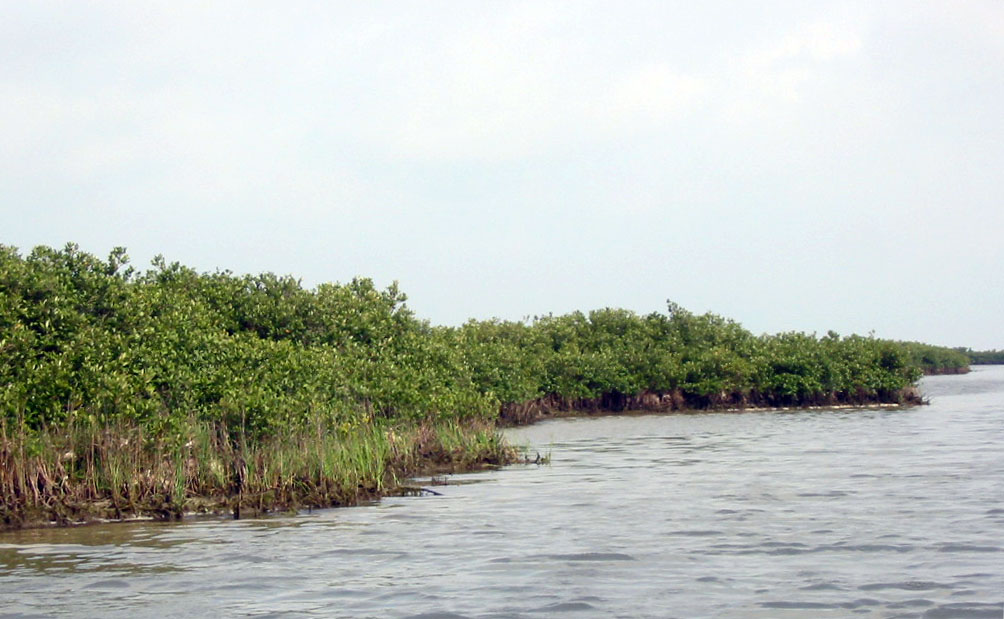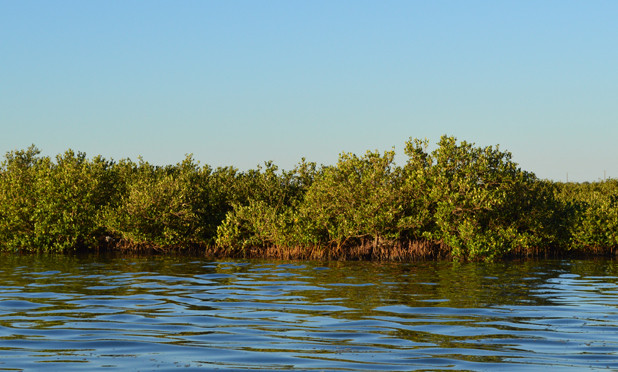Assessing mangrove expansion in the U.S.
Climate change is altering ecosystems and shifting range limits for many species. With warming winter temperatures, mangrove forests encroach on salt marshes in temperate and subtropical areas. This transition zone can be quite dynamic due to its abundance of suitable coastal wetland habitat and the balance between warmer temperatures, which favor expansion, and exposure to freezing conditions, which can cause mortality. Recently, 52 coastal scientists, including UTMSI’s Katie Swanson, Research Associate and Stewardship Coordinator for the Mission-Aransas Reserve, convened in 2021 to assess the distribution of mangroves at their rapidly changing range limits along the Gulf and Atlantic coasts of the U.S. Expert elicitation was also used to identify recurring themes related to data limitations and knowledge gaps. Their results are published in a new paper of Estuaries and Coasts.
Mangroves at their northern range limits occur as either large expanses of short, dense mangroves or simply a mangrove-marsh mosaic with lower densities. They are often shorter, wider, multi-stemmed, and more shrub-like than their tropical counterparts, which do not experience freezing conditions and grow as tall forests. In fact, temperature extremes at the poleward limit are far colder than comparable range limits on other continents. The group pointed out the need for customized methods and focused studies to fully understand mangrove dynamics and the mechanisms of northward dispersal and expansion.
The northern edge of mangroves is hard to capture with available mapping products, and the group identified many locations where mangrove presence and density were over- or underestimated when compared to expert knowledge. Although some limitations can be addressed through regional data-sharing, there is insufficient data to track expansion fully, and the group called for improved spatial and temporal data regarding changes in mangrove structure and abundance.
Understanding rapidly changing range limits is critical for foundation plant species everywhere as we work to anticipate and prepare for the cascading effects of climate-induced species redistribution on ecosystems and their services.
This project was supported by a National Academy of Sciences, Engineering, and Medicine Gulf Research Program Healthy Ecosystems Grant, Department of Energy, U.S. Geological Survey Climate R&D Program, the USGS Greater Everglades Priority Ecosystem Science Program, and the USGS Southeast Climate Adaptation Science Center, which is managed by the USGS National Climate Adaptation Science Center.
The majority of this press release was written and provided by coauthors Rémi Bardou and Randall Hughes from Northeastern University Marine Science Center and Mike Osland with U.S. Geological Survey.










